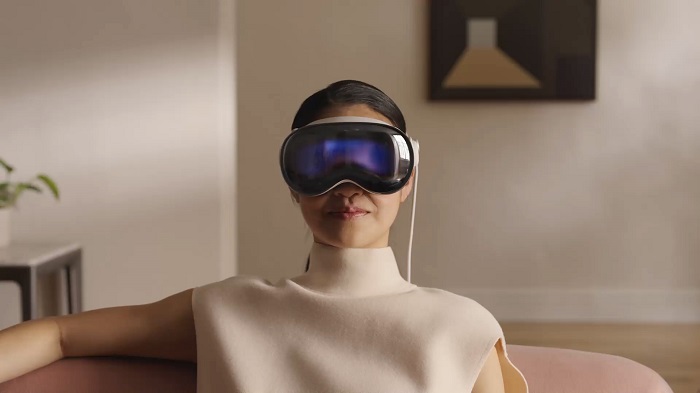ISABEL RUBIO ARROYO | Tungsteno
Apple has finally jumped on the mixed reality bandwagon with the Apple Vision Pro. It is undoubtedly one of the biggest tech news stories of the year. This is because Apple has an excellent track record of turning devices into products with mass appeal. We explore the potential of these headsets and how they could revolutionise architecture.
"Glasses" that you control with your eyes
"Apple's first spatial computer". This is how the Apple company describes its mixed reality headset. The device is designed to merge digital content with the physical world: "Vision Pro lets users interact with digital content in a way that feels like it is physically present in their space." The brand promises "extraordinary new experiences". "Just as the Mac introduced us to personal computing, and iPhone introduced us to mobile computing, Apple Vision Pro introduces us to spatial computing," says Apple CEO Tim Cook.
The headsets, which are designed to facilitate multitasking and productivity at work, could be used to view photos and videos in an immersive way. "Users can watch movies and TV shows, or enjoy stunning three-dimensional movies," Apple explains. They can also be used for FaceTime video calls, in which multiple heads "float" in space. Thanks to spatial audio, the participants appear to be speaking from the position they are in.
The headsets are controlled by the users' eyes, hands and voice. "It truly feels like magic, as if your mind is guiding the experience," announced an Apple executive at the presentation of the device. The first impressions of the tech-savvy people who have tried them out have been very positive. "I experienced incredible fidelity, surprising video quality and a really smooth interface," says Scott Stein on CNET. Technology YouTuber Marques Brownlee notes that the gaze tracking is "magical" and "impressive" when using it as a cursor in the visionOS interface.
YouTuber Marques Brownlee reckons the device is "awesome", but not yet a product for the masses. Credit: Marques Brownlee
The future of architecture?
Architects are already experimenting with how new technologies and artificial intelligence tools—such as Midjourney and DALL-E 2—can transform their work. What about Apple Vision Pro? Will it revolutionise architecture? While it is still too early to know for sure what the impact will be, several architecture websites are highlighting its potential in the sector. Architects could use the Vision Pro to create virtual prototypes of their designs, allowing them to see how a building would look in its real environment before it is built. In fact, virtual copies are already being used in the construction industry to prevent design errors, simulate the activity and achieve energy savings of up to 40%.
Using the headsets, architects can showcase detailed 3D models of their designs, simulate different real-world conditions and add lighting, textures and materials to their designs. "This not only helps architects to better visualise their ideas, but also enables them to communicate their designs more effectively to clients, contractors and other stakeholders," says the website ArchVisualizations. Downstream, builders could also use the headsets, for example, to correctly position materials by overlaying a 3D model of the roof onto that of a real building.
Some users point out that the synergy between Apple Vision Pro and spatial design extends beyond architecture: "Think about museums, where exhibits can come alive with additional information, multimedia experiences, and interactive storytelling—all through the lens of AR." And it doesn't stop there. The headsets could also revolutionise education and even the health sector. "It will be interesting to see, a year or more after its introduction, if it has inspired copycats and novel user applications," Mar Hicks, a historian of technology and professor at the Illinois Institute of Technology, tells the BBC.
Apple promises "extraordinary new experiences" with the headset. Credit: Apple.
One of the big unknowns is whether Apple will try to appeal to the widest possible audience with these headsets—which is difficult at the moment, given that they cost $3,499—or whether it will focus on a specific niche. In fact, some technology experts suggest that the brand should target the first version of the device at specialist users, such as architects. Devices that Apple has turned into mass market products in recent decades include the iPod (2001), the iPhone, the iPad and the Apple Watch. Will lightning strike again when the new headset is available?
Tungsteno is a journalism laboratory to scan the essence of innovation.
